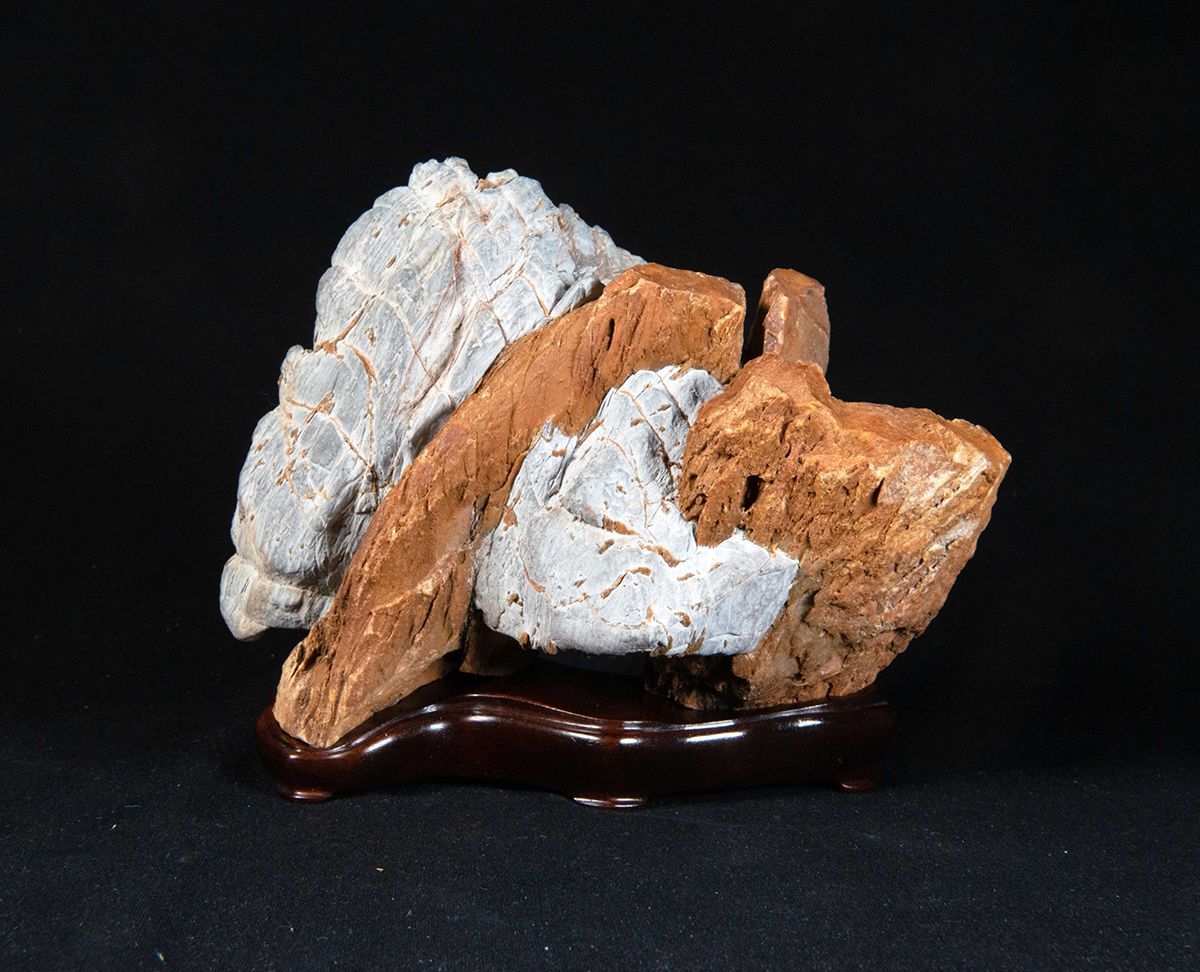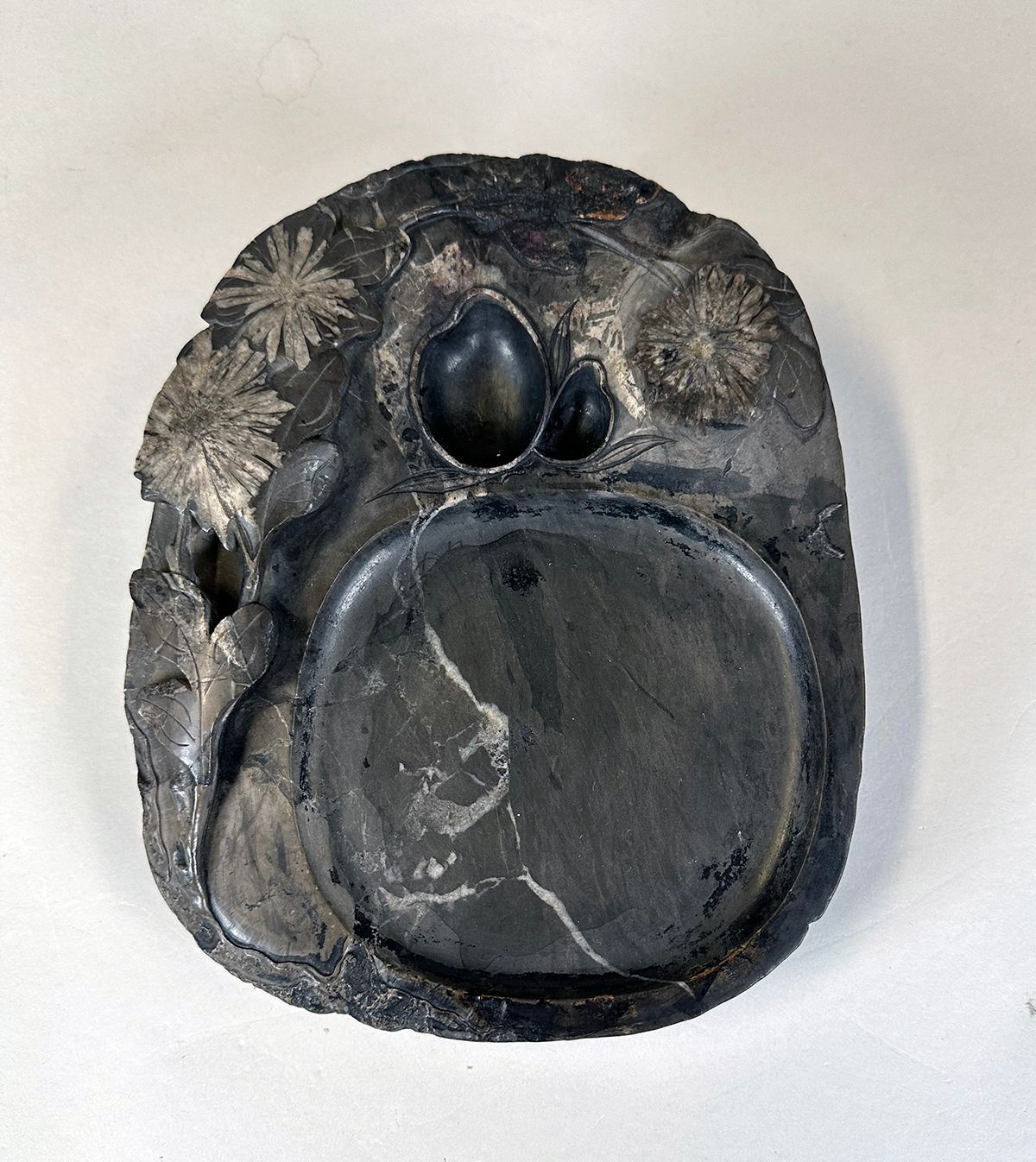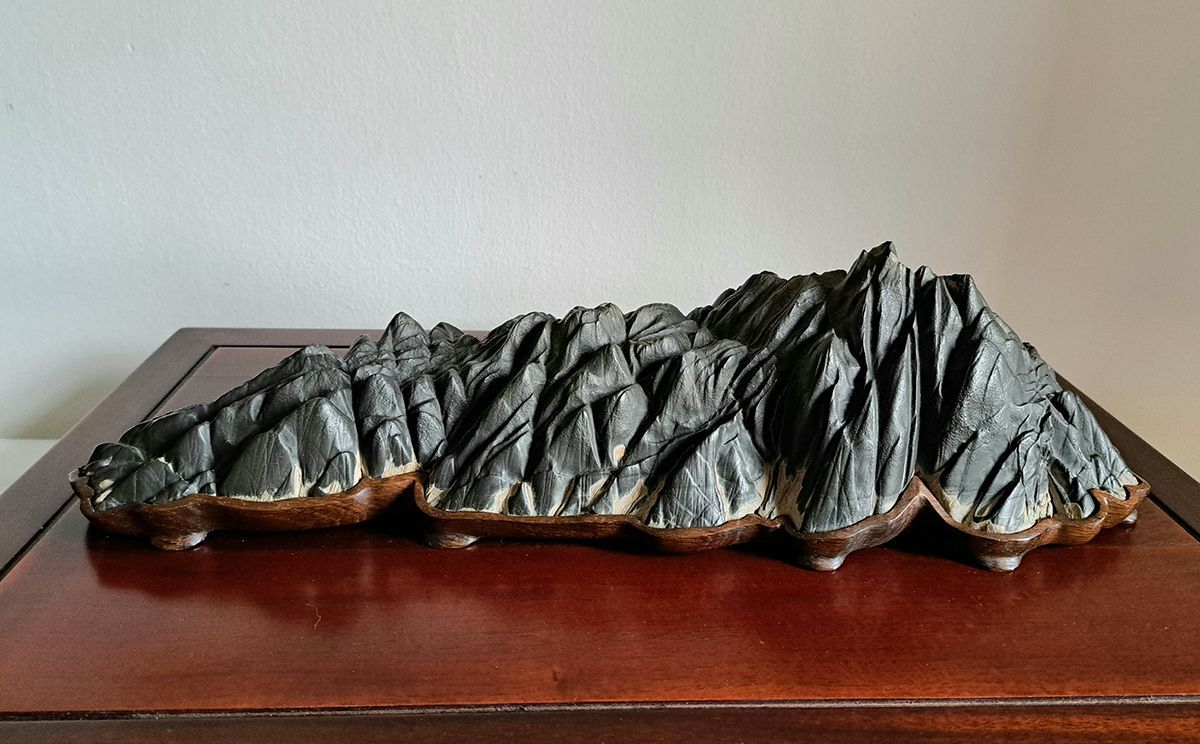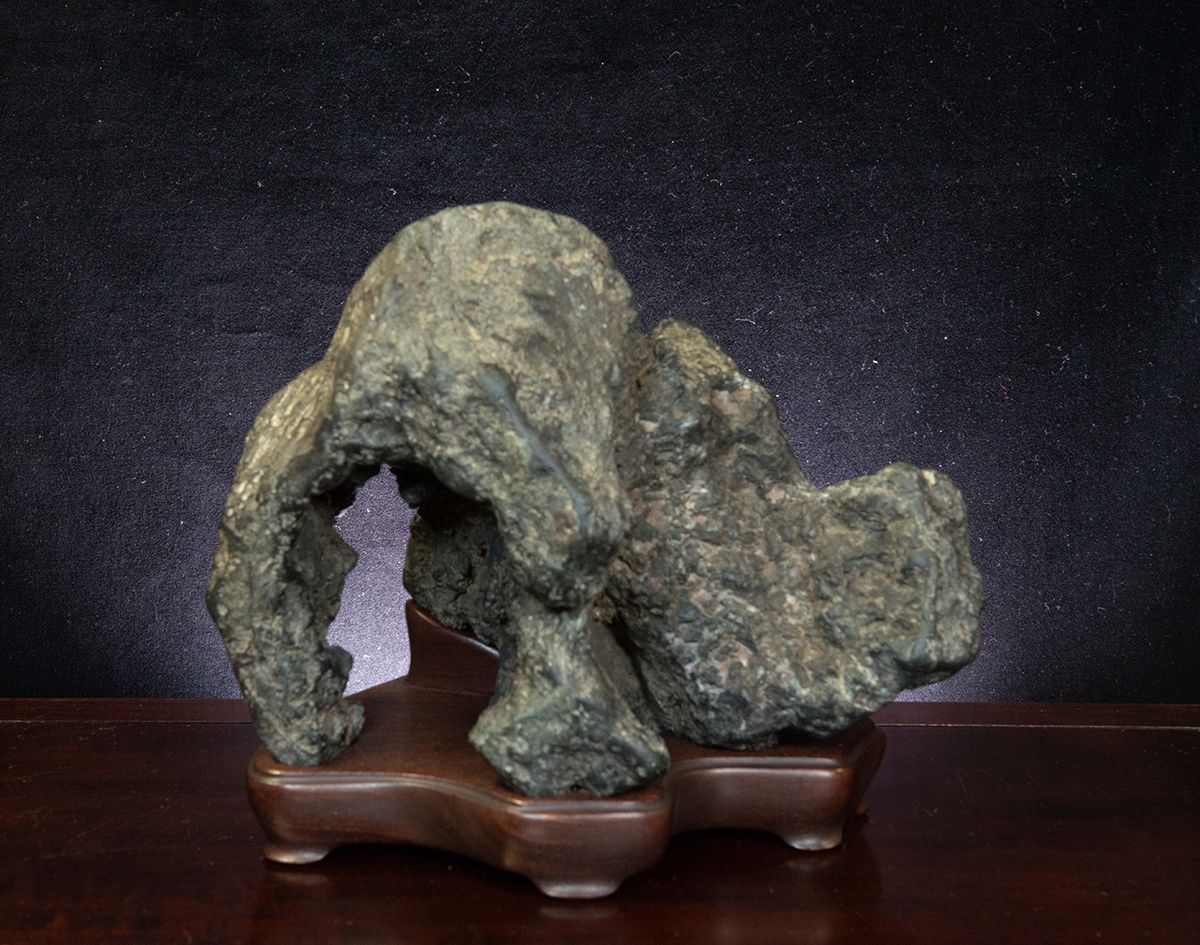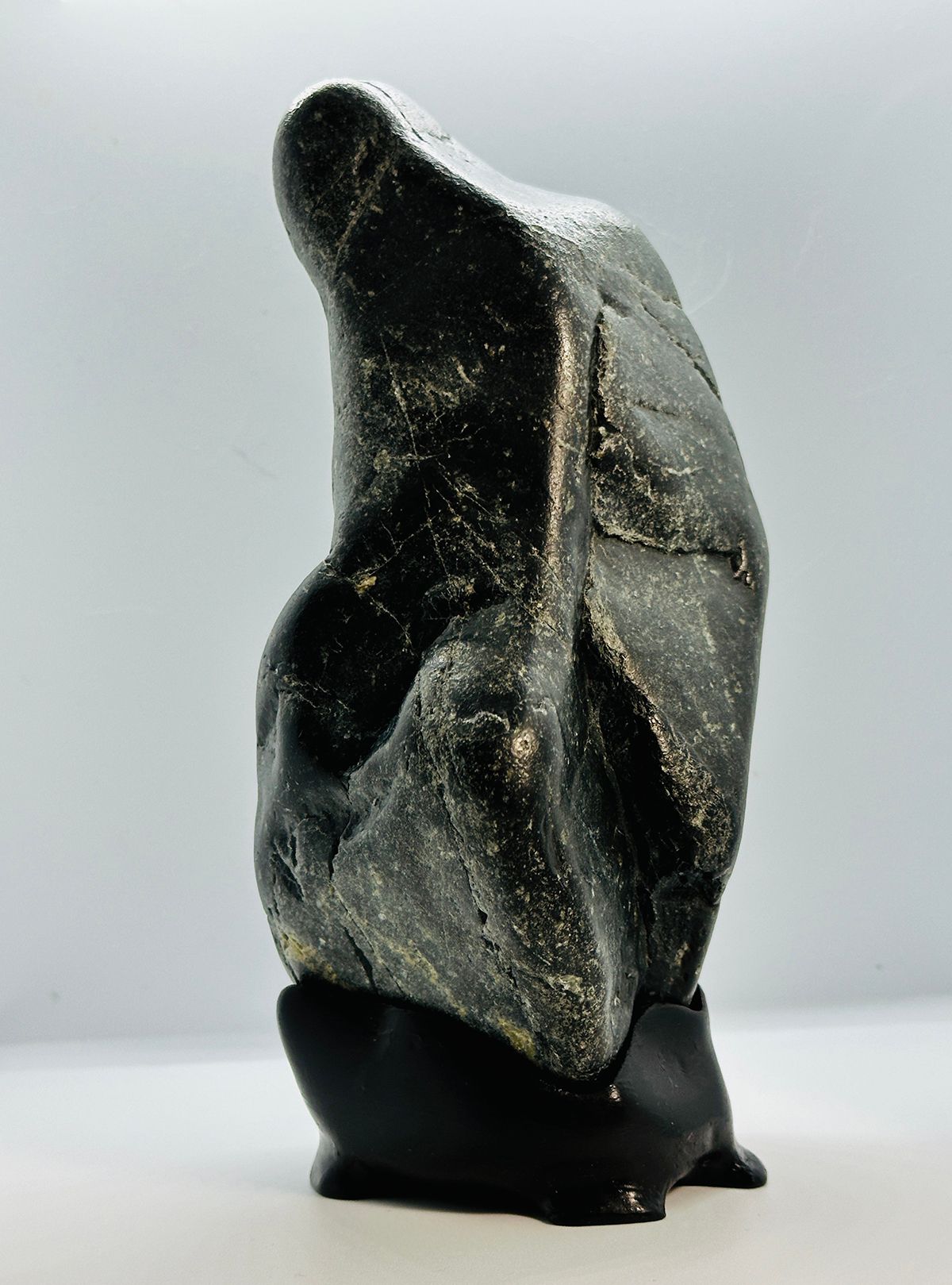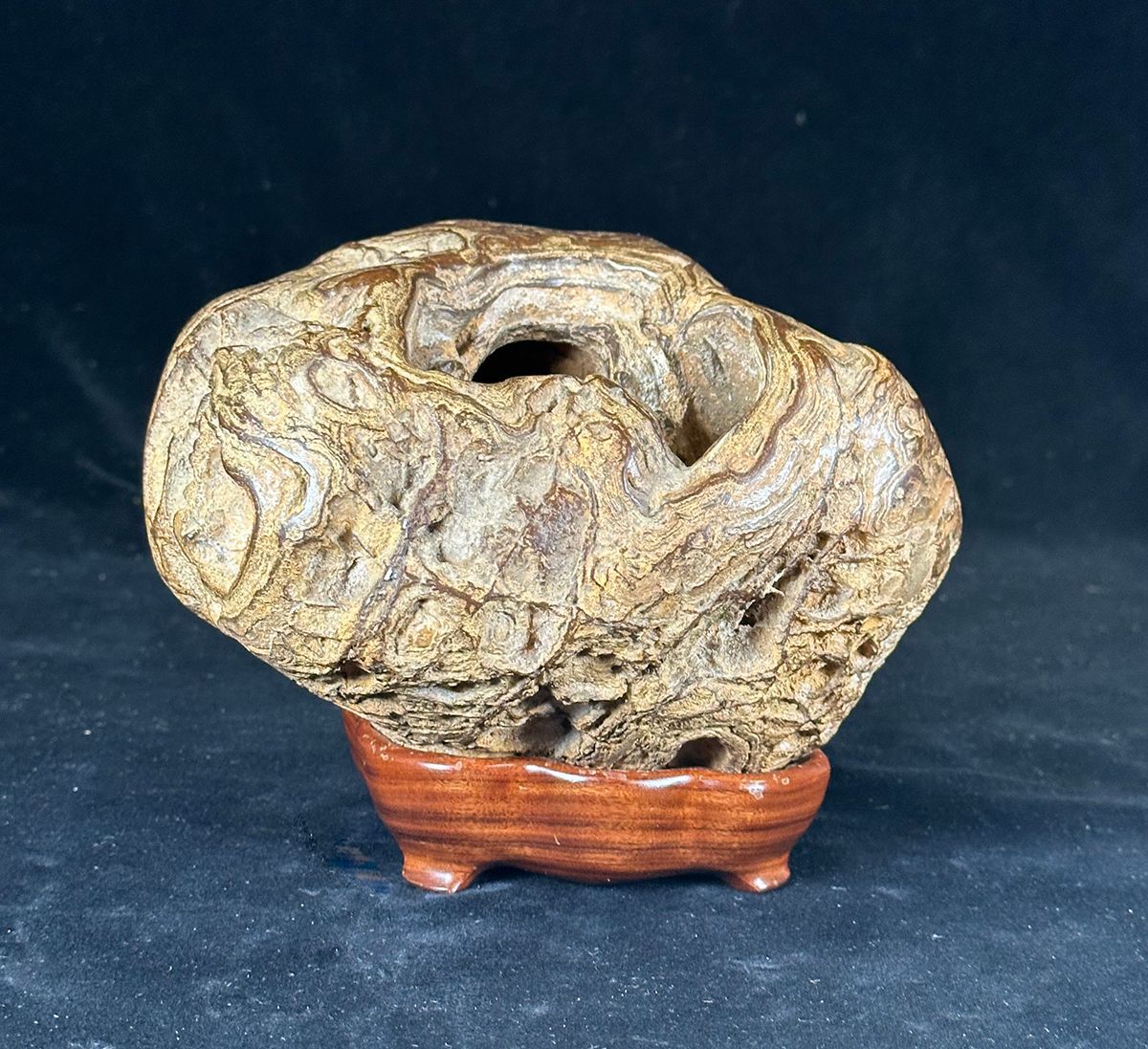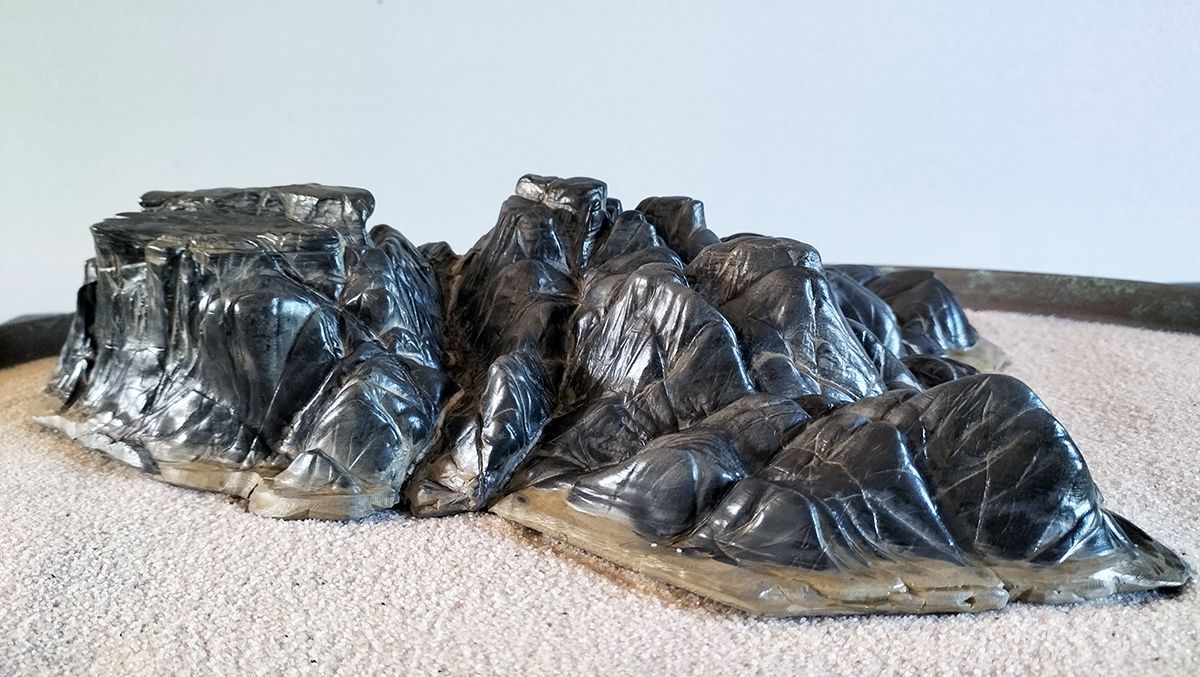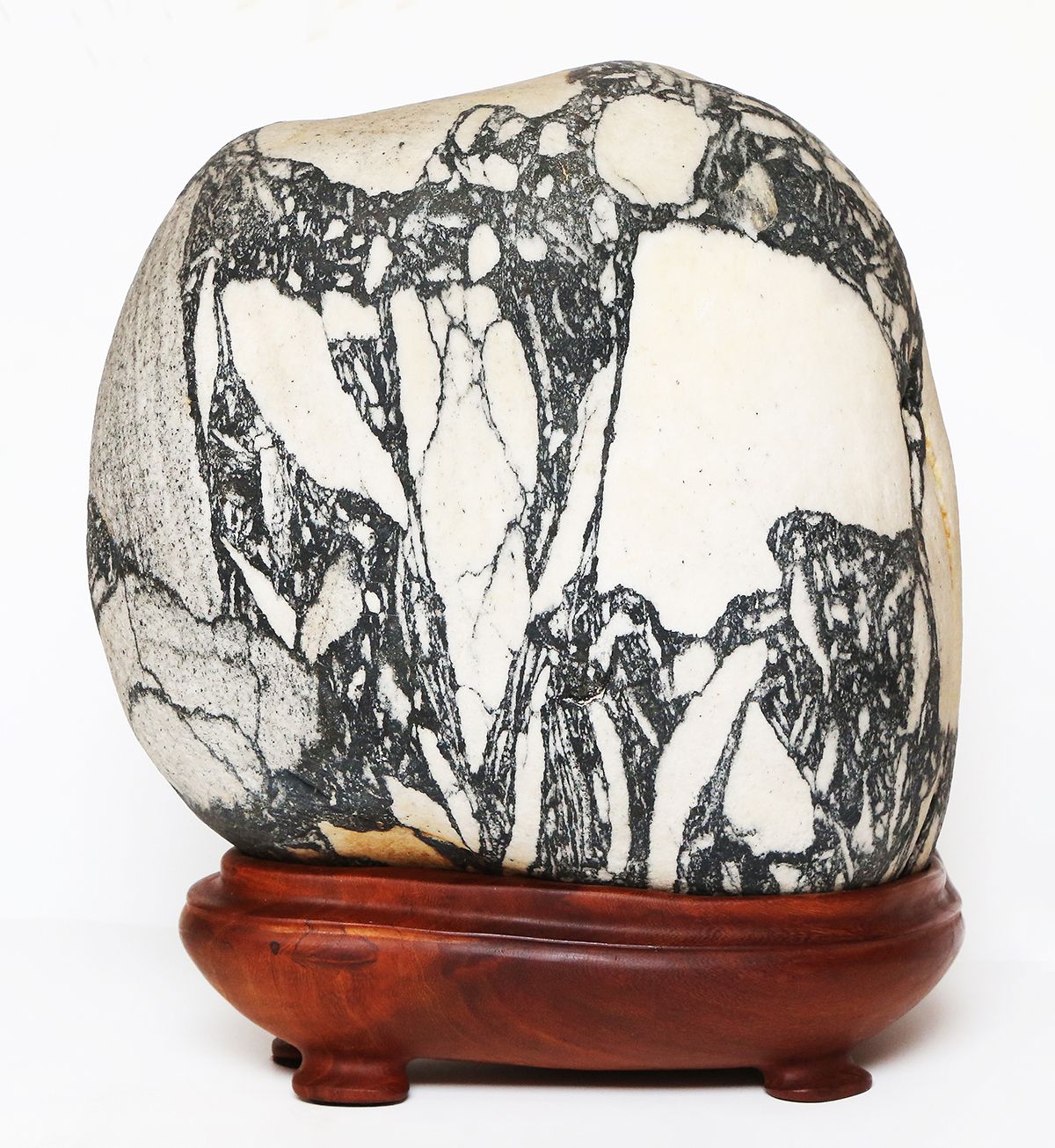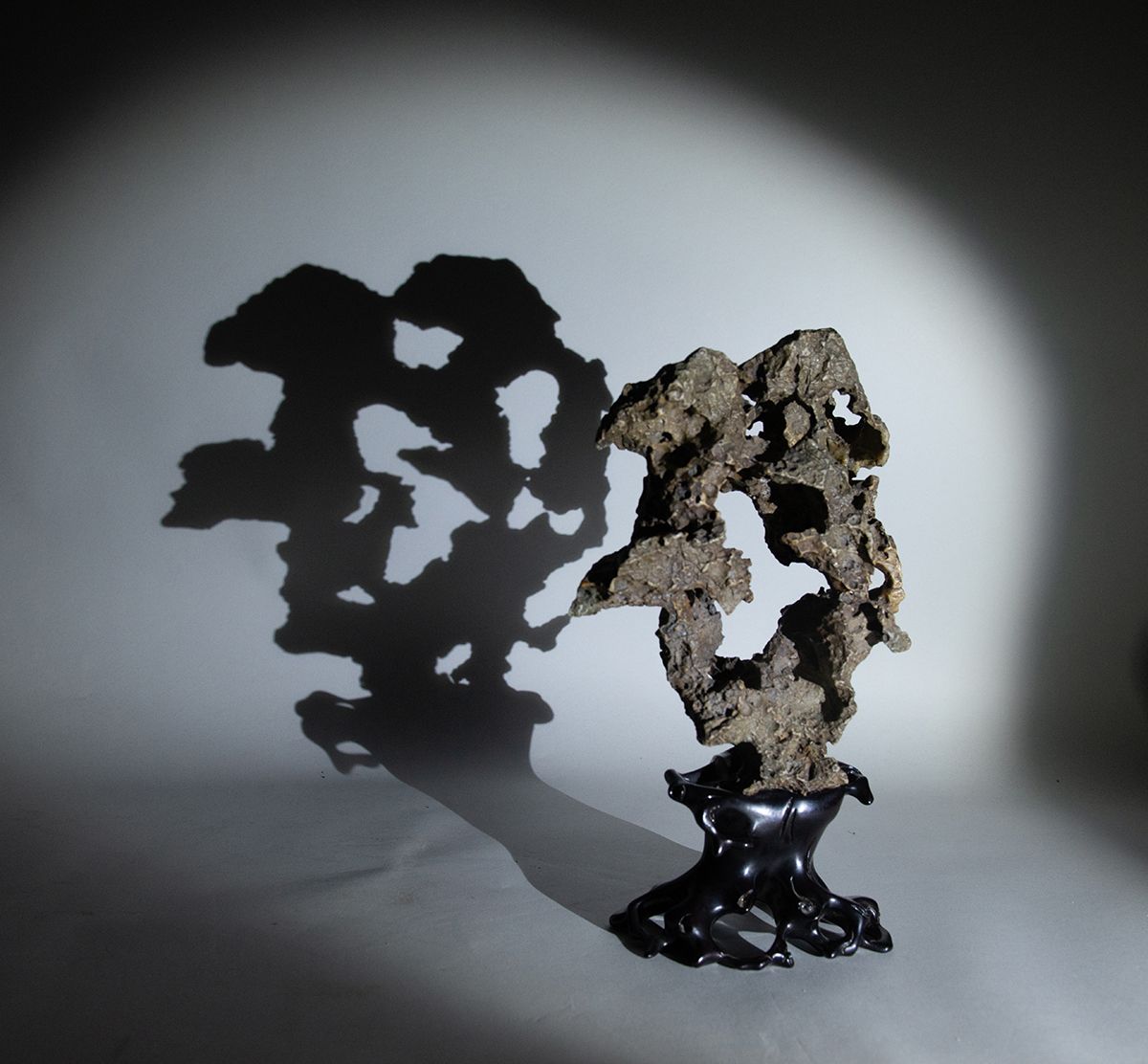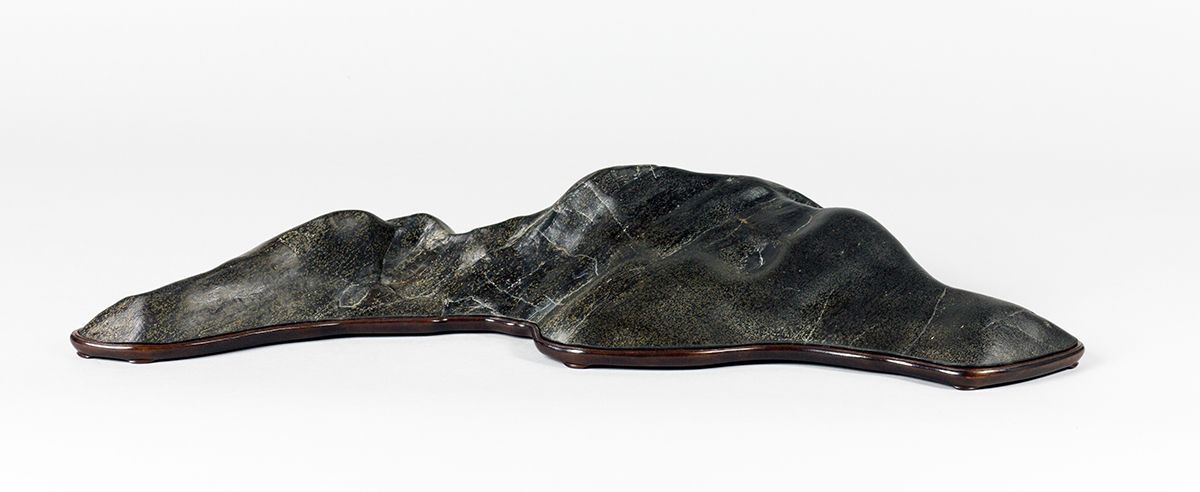
Stone of the Month:
November 2024
“Higashi-yama” (Eastern Mountain)”
By Thomas S. Elias, November 2024
This low-sweeping stone from the Seta River in Japan suggests an elegant island or a mountain range rising on the distance horizon. Its beauty lies in the gently descending slopes from the ridges of this rock. When sitting and observing the smooth surface and nearly black color, it is easy to see myself climbing one of the slopes to reach a peak and enjoy the distant view I fell in love with this stone when I first saw it for sale at the Green Club in Tokyo during the 2004 Kokufu-ten. It is a large stone measuring 54 cm wide, 8 cm high, and 21 cm deep.
I learned from Mr. Sato, the seller, that this stone was previously owned and exhibited by Ito Kunio in the 8th Taikanten in Kyoto in 1988. A photograph of this stone was published in the exhibition catalog of this Taikanten in the following year. Information about who and when this stone was first collected and when it was cut from a larger boulder is unknown. I exhibited this landscape stone at the 5th World Bonsai Convention held in Washington D.C. in 2005. The judges at this convention awarded it a certificate for the Best Mountain Stone in the exhibition and published it in the convention’s commemorative album. This provenance adds meaning to this riverstone. These recognitions are more important to me than the bottom was cut once. It is still an excellent viewing stone.
The poetic name “Higashi-yama” was given to this stone because it looks like a slumbering person covered with a comforter or futon. "Hagashi-yama is the name of a mountain range in Kyoto that inspired a famous Haiku by Hattori Ransetsu. It is a special stone I display periodically in my home when I simply wish to sit and observe this exceptional lithic treasure. I use this stone for meditation and contemplation. I see the vastness and beauty on Earth and feel privileged to have this stone to remind me of the temporal nature of life on Earth.

